Background
Hermann Weyl was born in Elmshorn, German Empire (now Elmshorn, Schleswig-Holstein, Germany), on 9 November 1885. He was the son of Ludwig Weyl, a bank clerk, and Anna (Dieck) Weyl.





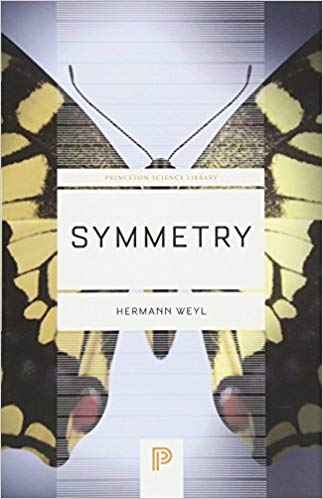
(Symmetry is a classic study of symmetry in mathematics, t...)
Symmetry is a classic study of symmetry in mathematics, the sciences, nature, and art from one of the twentieth century's greatest mathematicians. Hermann Weyl explores the concept of symmetry beginning with the idea that it represents a harmony of proportions, and gradually departs to examine its more abstract varieties and manifestations―as bilateral, translatory, rotational, ornamental, and crystallographic. Weyl investigates the general abstract mathematical idea underlying all these special forms, using a wealth of illustrations as support. Symmetry is a work of seminal relevance that explores the great variety of applications and importance of symmetry.
http://www.amazon.com/gp/product/0691173257/?tag=2022091-20
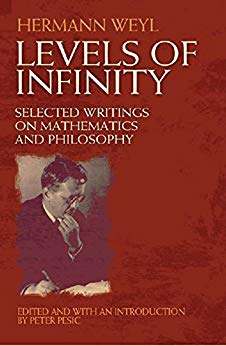
(This original anthology assembles ten accessible essays b...)
This original anthology assembles ten accessible essays by a giant of modern mathematics. Hermann Weyl (1885–1955) made lasting contributions to number theory as well as theoretical physics, and he was associated with Princeton's Institute for Advanced Study, the University of Göttingen, and ETH Zurich. Spanning the 1930s–50s, these articles offer insights into logic and relativity theory in addition to reflections on the work of Weyl's mentor, David Hilbert. Subjects include "Topology and Abstract Algebra as Two Roads of Mathematical Comprehension," "The Mathematical Way of Thinking," "Relativity Theory as a Stimulus in Mathematical Research," and "Why is the World Four-Dimensional?" Historians of mathematics, advanced undergraduates, and graduate students will appreciate these writings, many of which have been long unavailable to English-language readers. This original anthology assembles ten accessible essays by a giant of modern mathematics. Hermann Weyl (1885–1955) made lasting contributions to number theory as well as theoretical physics, and he was associated with Princeton's Institute for Advanced Study, the University of Göttingen, and ETH Zurich. Spanning the 1930s–50s, these articles offer insights into logic and relativity theory in addition to reflections on the work of Weyl's mentor, David Hilbert. Subjects include "Topology and Abstract Algebra as Two Roads of Mathematical Comprehension," "The Mathematical Way of Thinking," "Relativity Theory as a Stimulus in Mathematical Research," and "Why is the World Four-Dimensional?" Historians of mathematics, advanced undergraduates, and graduate students will appreciate these writings, many of which have been long unavailable to English-language readers.
http://www.amazon.com/gp/product/B00F0WWKOW/?tag=2022091-20
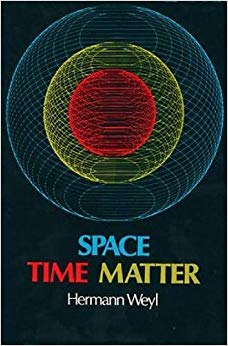
("The standard treatise on the general theory of relativit...)
"The standard treatise on the general theory of relativity." — Nature "Whatever the future may bring, Professor Weyl's book will remain a classic of physics." — British Journal for Philosophy and Science Reflecting the revolution in scientific and philosophic thought which accompanied the Einstein relativity theories, Dr. Weyl has probed deeply into the notions of space, time, and matter. A rigorous examination of the state of our knowledge of the world following these developments is undertaken with this guiding principle: that although further scientific thought may take us far beyond our present conception of the world, we may never again return to the previous narrow and restricted scheme. Although a degree of mathematical sophistication is presupposed, Dr. Weyl develops all the tensor calculus necessary to his exposition. He then proceeds to an analysis of the concept of Euclidean space and the spatial conceptions of Riemann. From this the nature of the amalgamation of space and time is derived. This leads to an exposition and examination of Einstein's general theory of relativity and the concomitant theory of gravitation. A detailed investigation follows devoted to gravitational waves, a rigorous solution of the problem of one body, laws of conservation, and the energy of gravitation. Dr. Weyl's introduction of the concept of tensor-density as a magnitude of quantity (contrasted with tensors which are considered to be magnitudes of intensity) is a major step toward a clearer understanding of the relationships among space, time, and matter. "The standard treatise on the general theory of relativity." — Nature "Whatever the future may bring, Professor Weyl's book will remain a classic of physics." — British Journal for Philosophy and Science Reflecting the revolution in scientific and philosophic thought which accompanied the Einstein relativity theories, Dr. Weyl has probed deeply into the notions of space, time, and matter. A rigorous examination of the state of our knowledge of the world following these developments is undertaken with this guiding principle: that although further scientific thought may take us far beyond our present conception of the world, we may never again return to the previous narrow and restricted scheme. Although a degree of mathematical sophistication is presupposed, Dr. Weyl develops all the tensor calculus necessary to his exposition. He then proceeds to an analysis of the concept of Euclidean space and the spatial conceptions of Riemann. From this the nature of the amalgamation of space and time is derived. This leads to an exposition and examination of Einstein's general theory of relativity and the concomitant theory of gravitation. A detailed investigation follows devoted to gravitational waves, a rigorous solution of the problem of one body, laws of conservation, and the energy of gravitation. Dr. Weyl's introduction of the concept of tensor-density as a magnitude of quantity (contrasted with tensors which are considered to be magnitudes of intensity) is a major step toward a clearer understanding of the relationships among space, time, and matter. "The standard treatise on the general theory of relativity." — Nature "Whatever the future may bring, Professor Weyl's book will remain a classic of physics." — British Journal for Philosophy and Science Reflecting the revolution in scientific and philosophic thought which accompanied the Einstein relativity theories, Dr. Weyl has probed deeply into the notions of space, time, and matter. A rigorous examination of the state of our knowledge of the world following these developments is undertaken with this guiding principle: that although further scientific thought may take us far beyond our present conception of the world, we may never again return to the previous narrow and restricted scheme. Although a degree of mathematical sophistication is presupposed, Dr. Weyl develops all the tensor calculus necessary to his exposition. He then proceeds to an analysis of the concept of Euclidean space and the spatial conceptions of Riemann. From this the nature of the amalgamation of space and time is derived. This leads to an exposition and examination of Einstein's general theory of relativity and the concomitant theory of gravitation. A detailed investigation follows devoted to gravitational waves, a rigorous solution of the problem of one body, laws of conservation, and the energy of gravitation. Dr. Weyl's introduction of the concept of tensor-density as a magnitude of quantity (contrasted with tensors which are considered to be magnitudes of intensity) is a major step toward a clearer understanding of the relationships among space, time, and matter.
http://www.amazon.com/gp/product/0486602672/?tag=2022091-20
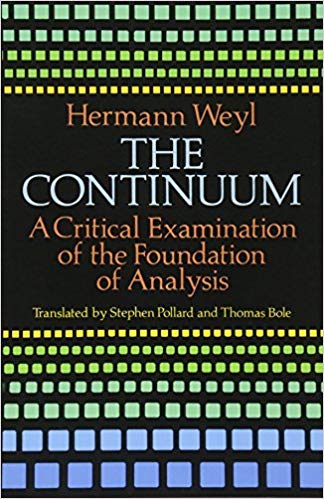
("The hard won power ... to assess correctly the continuum...)
"The hard won power ... to assess correctly the continuum of the natural numbers grew out of titanic struggles in the realm of mathematical logic in which Hermann Weyl took a leading part." — John Archibald Wheeler Hermann Weyl (1885–1955) ranks among the most important mathematicians and physicists of this century. Though Weyl was not primarily a philosopher, his wide-ranging philosophical reflections on the formal and empirical sciences remain extremely valuable. Besides indicating clearly which results of classical analysis are invalidated by an important family of "non-circular" (predicative) theories, The Continuum wrestles with the problem of applying constructive mathematical models to cases of concrete physical and perceptual continuity. This new English edition features a personal reminiscence of Weyl written by John Archibald Wheeler. Originally published in German in 1918, the book consists of two chapters. Chapter One, entitled Set and Function, deals with property, relation and existence, the principles of the combination of judgments, logical inference, natural numbers, iteration of the mathematical process, and other topics. The main ideas are developed in this chapter in such a way that it forms a self-contained whole. In Chapter Two, The Concept of Numbers & The Continuum, Weyl systematically begins the construction of analysis and carries through its initial stages, taking up such matters as natural numbers and cardinalities, fractions and rational numbers, real numbers, continuous functions, curves and surfaces, and more. Written with Weyl's characteristic passion, lucidity, and wisdom, this advanced-level volume is a mathematical and philosophical landmark that will be welcomed by mathematicians, physicists, philosophers, and anyone interested in foundational analysis. "The hard won power ... to assess correctly the continuum of the natural numbers grew out of titanic struggles in the realm of mathematical logic in which Hermann Weyl took a leading part." — John Archibald Wheeler Hermann Weyl (1885–1955) ranks among the most important mathematicians and physicists of this century. Though Weyl was not primarily a philosopher, his wide-ranging philosophical reflections on the formal and empirical sciences remain extremely valuable. Besides indicating clearly which results of classical analysis are invalidated by an important family of "non-circular" (predicative) theories, The Continuum wrestles with the problem of applying constructive mathematical models to cases of concrete physical and perceptual continuity. This new English edition features a personal reminiscence of Weyl written by John Archibald Wheeler. Originally published in German in 1918, the book consists of two chapters. Chapter One, entitled Set and Function, deals with property, relation and existence, the principles of the combination of judgments, logical inference, natural numbers, iteration of the mathematical process, and other topics. The main ideas are developed in this chapter in such a way that it forms a self-contained whole. In Chapter Two, The Concept of Numbers & The Continuum, Weyl systematically begins the construction of analysis and carries through its initial stages, taking up such matters as natural numbers and cardinalities, fractions and rational numbers, real numbers, continuous functions, curves and surfaces, and more. Written with Weyl's characteristic passion, lucidity, and wisdom, this advanced-level volume is a mathematical and philosophical landmark that will be welcomed by mathematicians, physicists, philosophers, and anyone interested in foundational analysis. "The hard won power ... to assess correctly the continuum of the natural numbers grew out of titanic struggles in the realm of mathematical logic in which Hermann Weyl took a leading part." — John Archibald Wheeler Hermann Weyl (1885–1955) ranks among the most important mathematicians and physicists of this century. Though Weyl was not primarily a philosopher, his wide-ranging philosophical reflections on the formal and empirical sciences remain extremely valuable. Besides indicating clearly which results of classical analysis are invalidated by an important family of "non-circular" (predicative) theories, The Continuum wrestles with the problem of applying constructive mathematical models to cases of concrete physical and perceptual continuity. This new English edition features a personal reminiscence of Weyl written by John Archibald Wheeler. Originally published in German in 1918, the book consists of two chapters. Chapter One, entitled Set and Function, deals with property, relation and existence, the principles of the combination of judgments, logical inference, natural numbers, iteration of the mathematical process, and other topics. The main ideas are developed in this chapter in such a way that it forms a self-contained whole. In Chapter Two, The Concept of Numbers & The Continuum, Weyl systematically begins the construction of analysis and carries through its initial stages, taking up such matters as natural numbers and cardinalities, fractions and rational numbers, real numbers, continuous functions, curves and surfaces, and more. Written with Weyl's characteristic passion, lucidity, and wisdom, this advanced-level volume is a mathematical and philosophical landmark that will be welcomed by mathematicians, physicists, philosophers, and anyone interested in foundational analysis.
http://www.amazon.com/gp/product/0486679829/?tag=2022091-20

(This classic on the general history of functions was writ...)
This classic on the general history of functions was written by one of the twentieth century's best-known mathematicians. Hermann Weyl, who worked with Einstein at Princeton, combined function theory and geometry in this high-level landmark work, forming a new branch of mathematics and the basis of the modern approach to analysis, geometry, and topology. The author intended this book not only to develop the basic ideas of Riemann's theory of algebraic functions and their integrals but also to examine the related ideas and theorems with an unprecedented degree of rigor. Weyl's two-part treatment begins by defining the concept and topology of Riemann surfaces and concludes with an exploration of functions of Riemann surfaces. His teachings illustrate the role of Riemann surfaces as not only devices for visualizing the values of analytic functions but also as indispensable components of the theory. This classic on the general history of functions was written by one of the twentieth century's best-known mathematicians. Hermann Weyl, who worked with Einstein at Princeton, combined function theory and geometry in this high-level landmark work, forming a new branch of mathematics and the basis of the modern approach to analysis, geometry, and topology. The author intended this book not only to develop the basic ideas of Riemann's theory of algebraic functions and their integrals but also to examine the related ideas and theorems with an unprecedented degree of rigor. Weyl's two-part treatment begins by defining the concept and topology of Riemann surfaces and concludes with an exploration of functions of Riemann surfaces. His teachings illustrate the role of Riemann surfaces as not only devices for visualizing the values of analytic functions but also as indispensable components of the theory.
http://www.amazon.com/gp/product/0486470040/?tag=2022091-20
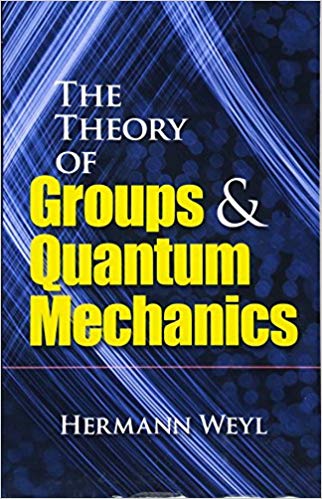
(This book is devoted to the consistent and systematic app...)
This book is devoted to the consistent and systematic application of group theory to quantum mechanics. Beginning with a detailed introduction to the classical theory of groups, Dr. Weyl continues with an account of the fundamental results of quantum physics. There follows a rigorous investigation of the relations holding between the mathematical and physical theories. Topics covered include: unitary geometry, quantum theory (Schrödinger's wave equation, transition probabilities, directional quantization, collision phenomena, Zeeman and Stark effects); groups and their representations (sub-groups and conjugate classes, linear transformations, rotation and Lorentz groups, closed continuous groups, invariants and covariants, Lie's theory); applications of group theory to quantum mechanics (simple state and term analysis, the spinning electron, multiplet structure, energy and momentum, Pauli exclusion principle, problem of several bodies, Maxwell-Dirac field equations, etc.); the symmetric permutation group; and algebra of symmetric transformation (invariant sub-spaces in group and tensor space, sub-groups, Young's symmetry operators, spin and valence, group theoretic classification of atomic spectra, branching laws, etc). Throughout, Dr. Weyl emphasizes the "reciprocity" between representations of the symmetric permutation group and those of the complete linear group. His simplified treatment of "reciprocity," the Clebsch-Gordan series, and the Jordan-Hölder theorem and its analogues, has helped to clarity these and other complex topics. This book is devoted to the consistent and systematic application of group theory to quantum mechanics. Beginning with a detailed introduction to the classical theory of groups, Dr. Weyl continues with an account of the fundamental results of quantum physics. There follows a rigorous investigation of the relations holding between the mathematical and physical theories. Topics covered include: unitary geometry, quantum theory (Schrödinger's wave equation, transition probabilities, directional quantization, collision phenomena, Zeeman and Stark effects); groups and their representations (sub-groups and conjugate classes, linear transformations, rotation and Lorentz groups, closed continuous groups, invariants and covariants, Lie's theory); applications of group theory to quantum mechanics (simple state and term analysis, the spinning electron, multiplet structure, energy and momentum, Pauli exclusion principle, problem of several bodies, Maxwell-Dirac field equations, etc.); the symmetric permutation group; and algebra of symmetric transformation (invariant sub-spaces in group and tensor space, sub-groups, Young's symmetry operators, spin and valence, group theoretic classification of atomic spectra, branching laws, etc). Throughout, Dr. Weyl emphasizes the "reciprocity" between representations of the symmetric permutation group and those of the complete linear group. His simplified treatment of "reciprocity," the Clebsch-Gordan series, and the Jordan-Hölder theorem and its analogues, has helped to clarity these and other complex topics. This book is devoted to the consistent and systematic application of group theory to quantum mechanics. Beginning with a detailed introduction to the classical theory of groups, Dr. Weyl continues with an account of the fundamental results of quantum physics. There follows a rigorous investigation of the relations holding between the mathematical and physical theories. Topics covered include: unitary geometry, quantum theory (Schrödinger's wave equation, transition probabilities, directional quantization, collision phenomena, Zeeman and Stark effects); groups and their representations (sub-groups and conjugate classes, linear transformations, rotation and Lorentz groups, closed continuous groups, invariants and covariants, Lie's theory); applications of group theory to quantum mechanics (simple state and term analysis, the spinning electron, multiplet structure, energy and momentum, Pauli exclusion principle, problem of several bodies, Maxwell-Dirac field equations, etc.); the symmetric permutation group; and algebra of symmetric transformation (invariant sub-spaces in group and tensor space, sub-groups, Young's symmetry operators, spin and valence, group theoretic classification of atomic spectra, branching laws, etc). Throughout, Dr. Weyl emphasizes the "reciprocity" between representations of the symmetric permutation group and those of the complete linear group. His simplified treatment of "reciprocity," the Clebsch-Gordan series, and the Jordan-Hölder theorem and its analogues, has helped to clarity these and other complex topics.
http://www.amazon.com/gp/product/0486602699/?tag=2022091-20
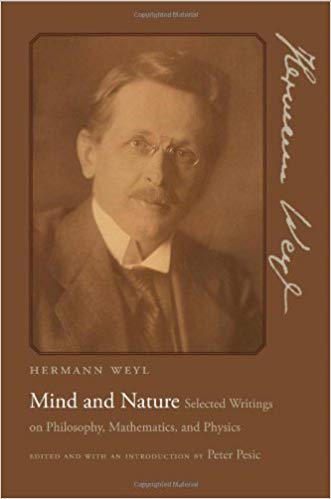
(Mind and Nature is a collection of Weyl's most important ...)
Mind and Nature is a collection of Weyl's most important general writings on philosophy, mathematics, and physics, including pieces that have never before been published in any language or translated into English, or that have long been out of print. Complete with Peter Pesic's introduction, notes, and bibliography, these writings reveal an unjustly neglected dimension of a complex and fascinating thinker. In addition, the book includes more than twenty photographs of Weyl and his family and colleagues, many of which are previously unpublished. Included here are Weyl's exposition of his important synthesis of electromagnetism and gravitation, which Einstein at first hailed as "a first-class stroke of genius"; two little-known letters by Weyl and Einstein from 1922 that give their contrasting views on the philosophical implications of modern physics; and an essay on time that contains Weyl's argument that the past is never completed and the present is not a point. Also included are two book-length series of lectures, The Open World (1932) and Mind and Nature (1934), each a masterly exposition of Weyl's views on a range of topics from modern physics and mathematics. Finally, four retrospective essays from Weyl's last decade give his final thoughts on the interrelations among mathematics, philosophy, and physics, intertwined with reflections on the course of his rich life.
http://www.amazon.com/gp/product/0691135452/?tag=2022091-20
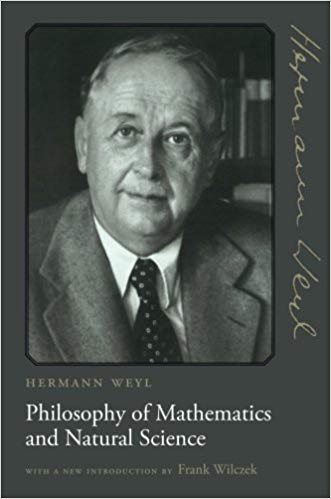
(When mathematician Hermann Weyl decided to write a book o...)
When mathematician Hermann Weyl decided to write a book on philosophy, he faced what he referred to as "conflicts of conscience"--the objective nature of science, he felt, did not mesh easily with the incredulous, uncertain nature of philosophy. Yet the two disciplines were already intertwined. In Philosophy of Mathematics and Natural Science, Weyl examines how advances in philosophy were led by scientific discoveries--the more humankind understood about the physical world, the more curious we became. The book is divided into two parts, one on mathematics and the other on the physical sciences. Drawing on work by Descartes, Galileo, Hume, Kant, Leibniz, and Newton, Weyl provides readers with a guide to understanding science through the lens of philosophy. This is a book that no one but Weyl could have written--and, indeed, no one has written anything quite like it since.
http://www.amazon.com/gp/product/0691141207/?tag=2022091-20
mathematician philosopher physicist scientist
Hermann Weyl was born in Elmshorn, German Empire (now Elmshorn, Schleswig-Holstein, Germany), on 9 November 1885. He was the son of Ludwig Weyl, a bank clerk, and Anna (Dieck) Weyl.
The financial standing of his parents enabled Weyl to receive a quality education. From 1895 to 1904 he attended the Gymnasium at Altona, where his performance attracted the attention of his headmaster, a relative of an eminent mathematician of that time, David Hilbert. Weyl soon found himself at the University of Gottingen where Hilbert was an instructor. He remained there for the rest of his student days, with the exception of a semester at the University of Munich. He received his degree under Hilbert in 1908.
At the beginning of his career, Weyl advanced to the ranks of privat docent (unpaid but licensed instructor) in 1910.
In 1913 he accepted a position as professor at the National Technical University (ETH) in Zurich, Switzerland. He declined the offer to be Felix Klein’s successor at Gottingen, despite the university’s central role in the mathematical world.
It is not surprising that Weyl’s early work dealt with topics in which Hilbert, his headmaster, held an interest. His Habilitationsschrift was devoted to boundary conditions of second-order linear differential equations. (The way the German educational system worked, it was necessary to do a substantial piece of original research beyond the doctoral dissertation in order to qualify to teach in the university. This “entitling document” was frequently the launching point of the mathematical career of its author.)
One of the principal areas of Weyl’s research was the topic of Hilbert spaces. The problem was to understand something about the functions that operated on the points of Hilbert space in a way useful for analyzing the result of applying the functions. In particular, Weyl wanted to know where the functions behaved more simply than on the space as a whole, since the behavior of the function on the rest of the space could be represented in terms of its behavior on the simpler regions. Different kinds of functions behaved in radically different ways on a Hilbert space, so Weyl had to restrict his attention to a subclass of functions small enough to be tractable (for example, the functions could not “blow up”) but large enough to be useful. His choice of self-adjoint, compact operators was justified by their subsequent importance in the field of functional analysis.
Among the areas he brought together were geometry and analysis from the nineteenth century and topology, which was largely a creation of the twentieth century. Weyl was able to take advantage of the work of Hilbert and the Dutch mathematician Luitzen Egbertus Jan Brouwer. This effort culminated in his 1913 book on Riemann surfaces, an excellent exposition on how complex analysis and topology could be used together to analyze the behavior of complex functions.
Weyl served briefly in the German army at the outbreak of World War I, but before this military interlude, he did research that led to one of his most important papers. He looked at the way irrational numbers (those that cannot be expressed as a ratio of two whole numbers) were distributed. What he noticed was that the fractional parts of an irrational number and its integral multiples seemed to be evenly distributed in the interval between O and 1. He succeeded in proving this result, and it is known as the Kronecker-Weyl theorem, owing half of its name to an influential number theorist who had an effect on Hilbert. Although the result may seem rather narrow, Weyl was able to generalize it to sequences of much broader application.
During his time in Zurich, Weyl spent a year in collaboration with Albert Einstein and picked up a dose of enthusiasm for the relativity theory. Among the other results of this collaboration was Weyl’s popular account of relativity theory Space, Time, Matter (the original German edition appeared in 1918).
Weyl used the tensor calculus that had been developed by the geometers to come up with neater formulations of general relativity than the original version proposed by Einstein. In later years, he took the evolution of tensors one step further while maintaining a strict mathematical level of rigor.
One of the most visible areas in which Weyl worked after World War I was in the foundations of mathematics. He had used some of the topological results of the Dutch mathematician Brouwer in working on Riemann surfaces. In addition, he had looked at some of Brouwer’s ideas about the philosophy of mathematics and was convinced that they had to be taken seriously.
What especially disturbed Hilbert was Weyl’s support of Brouwer’s concepts, since Hilbert knew the mathematical strength of his former student. In the 1920s, while the argument was being considered, Hilbert was discouraged about the future of mathematics in the hands of the intuitionists.
Weyl subsequently became Professor of Mathematics at Göttingen (1930) and for a brief time Director of its famous Mathematical Institute.
In 1933 Weyl decided that he could no longer remain in Nazi Germany, and he took up a permanent position at the Institute for Advanced Study, newly founded in Princeton, New Jersey. He remained there until 1951.
There may have been the additional attraction of the wealth of intellectual company available at the institute, between its visitors from all over the globe and permanent residents such as Einstein. Weyl took his official duties as a faculty member seriously, although his reputation could be terrifying to younger mathematicians unaware of the poet within.
Weyl’s work continued to bridge the gap between physics and mathematics. As long ago as 1929, he developed a mathematical theory for the subatomic particle the neutrino. The theory was internally consistent but failed to preserve left-right symmetry and so was abandoned. Subsequent experimentation revealed that symmetry need not be conserved, with the result that Weyl’s theory reentered the mathematical physics mainstream all the more forcefully. Another area for the interaction of mathematics and physics was the study of spinors, a kind of tensor that has proven to be of immense use in quantum mechanics.
In a 1923 paper Weyl had come up with a suitable definition for congruence in relativistic spacetime. Even more influential was his book on group theory and quantum mechanics, which imposed a model that would have been welcome to Klein due to the previously rather disjointed results assembled by quantum physicists. Weyl was an artist in the use of group theory and could accomplish wonders with modest mathematical structure.
After the end of the World War II, Weyl divided his time between Zurich and Princeton.
He took a serious view of the history of mathematics and arranged with Princeton to give a course on the subject. One of his magisterial works was a survey of the previous half-century of mathematics that appeared in the American Mathematical Monthly in 1951. Although he never became as fluent in English as he had in German, he retained a strong commitment to the public’s right to be informed about scientific developments.
Hermann Weyl was one of the twentieth century's most important mathematicians, as well as a seminal figure in the development of quantum physics and general relativity. He was one of the first to conceive of combining general relativity with the laws of electromagnetism.
Although spinors had been known before Weyl, he was the first to give a full treatment of them. Perhaps it was this work that led Roger Penrose, one of the most insightful mathematical physicists of the second half of the twentieth century, to label Weyl “the greatest mathematician of this century.”
(Mind and Nature is a collection of Weyl's most important ...)
(When mathematician Hermann Weyl decided to write a book o...)
(Weyl created a new branch of mathematics by uniting funct...)
(Symmetry is a classic study of symmetry in mathematics, t...)
(This classic on the general history of functions was writ...)
(This book is devoted to the consistent and systematic app...)
(This original anthology assembles ten accessible essays b...)
("The standard treatise on the general theory of relativit...)
("The hard won power ... to assess correctly the continuum...)
Quotations: "I could not bear to live under the rule of that demon [Hitler] who had dishonoured the name of Germany, and although the wrench was hard and the mental agony so cruel that I suffered a severe breakdown, I shook the dust of the fatherland from my feet."
Weyl was a fellow of the Royal Society.
Weyl married Helene Joseph (known as Hella to the family) in 1913. His first wife died in 1948, and two years later he married Ellen Bair. He had two children from the first marriage - Fritz Joachim and Michael.
